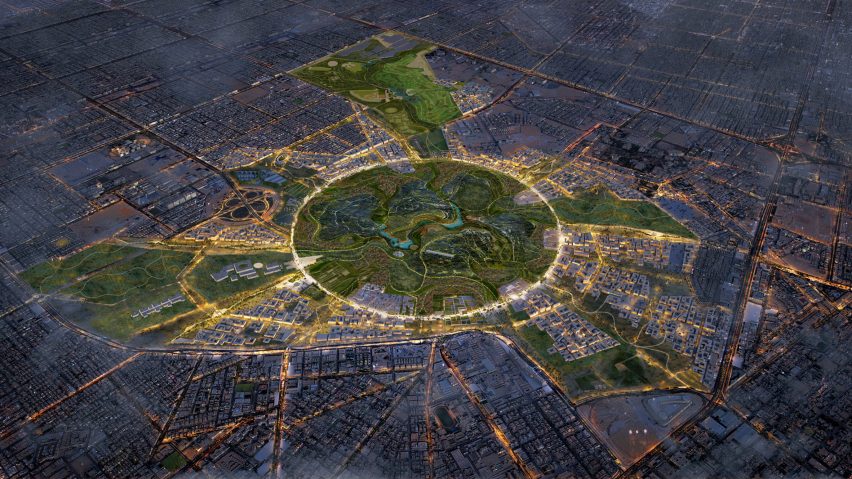
Everything you need to know about Saudi Arabia's 14 "giga projects"
Saudi Arabia is currently undergoing a massive development program and while Neom is very well known, it is only one of 14 giga projects in the country. Here we explain them all.
Developed as part of crown prince Mohammad bin Salman's Vision 2030 plan to transform the country, the series of giant developments, many of which were on display at the Cityscape conference in Riyadh, are known as giga projects.
Each is huge in scale and ambition, and many are directly funded by the country's sovereign wealth fund – the Public Investment Fund. Others, such as the Mohammed bin Salman Non-profit City, are funded by the crown prince himself.
Several of the giga projects are traditional developments restricted to a single, albeit usually huge, site. These include Masar in Makkah (known widely as Mecca), the Jeddah Central Project in Jeddah and King Salman Park in Riyadh.
Other giga projects are spread across numerous sites, including projects headed up by Saudi Downtown Company, which is aiming to create downtowns in 12 cities across the kingdom, and property developer Roshn, which has a mission to build 400,000 homes across Saudi.
Numerous western starchitects are designing schemes for the giga projects; these include Zaha Hadid Architects, Ricardo Bofill, Heatherwick Studio, BIG, Foster + Partners, Jean Nouvel, LAVA, Morphogenis, Adjaye Associates, Henning Larsen and SOM.
Below are details of each of the 14 giga projects:
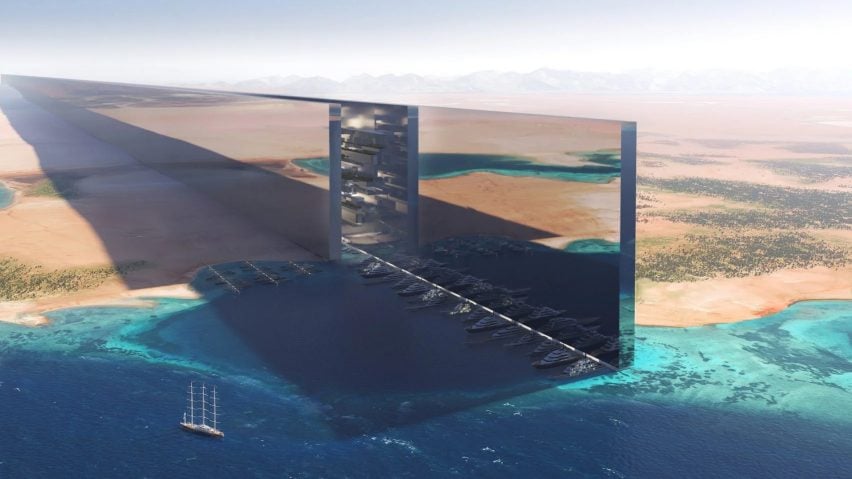
Neom
Undoubtedly the best-known of the Saudi giga projects, Neom is the largest and also most controversial scheme being developed in the kingdom.
Encompassing an area of around 10,200 square miles, Neom will consist of 10 regions, of which four have been announced so far, including a 170-kilometre-long city called The Line (pictured). Along with The Line, the planned regions include an octagon-shaped port city named Oxagon, a ski resort named Trojena and an island resort called Sindalah.
Architecture studios working on the project include US studio Morphosis, Peter Cook's studio CHAP, Danish studio BIG, UK studio Zaha Hadid Architects, Dutch practices Mecanoo and UNStudio, US studio Aedas, German studio LAVA and Australian studio Bureau Proberts.
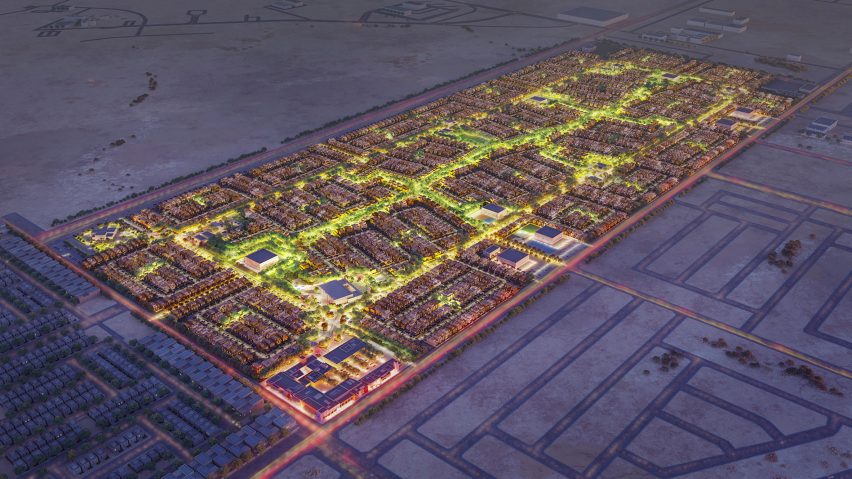
Roshn
Although not as well known as Neom, Roshn is equally ambitious. The company set up by the Public Investment Fund's core task is to increase the rate of home ownership in Saudi Arabia to 70 per cent by 2030. To do this, it has set the target of building 400,000 homes.
The Roshn project is already in progress and has already built 6,000 homes with 27,000 currently under construction. The project will also see the construction of 850 mosques, 2,400 schools and the planting of one million trees.

The Red Sea Project
Another highly publicised scheme, the Red Sea Project will see areas of the country's coast developed into resorts as a key part of the country's focus on increasing tourism. Owned by the Public Investment Fund, the project consists of two distinct developments called The Red Sea and Amaala.
The project will include an airport designed by UK studio Foster + Partners, which is being built around 15 kilometres inland from the coast.
The studio is heavily involved in the development. It is designing several hotels, including a ring-shaped hotel on stilts and the Coral Bloom island resort (pictured) as well as a hotel among the Saudi Arabian sand dunes. Foster + Partners is also designing a coral-reef-like Marine Life Institute at the Amaala resort.
Other studios working on the project include Kengo Kuma and Associates, which is designing 100 holiday villas.
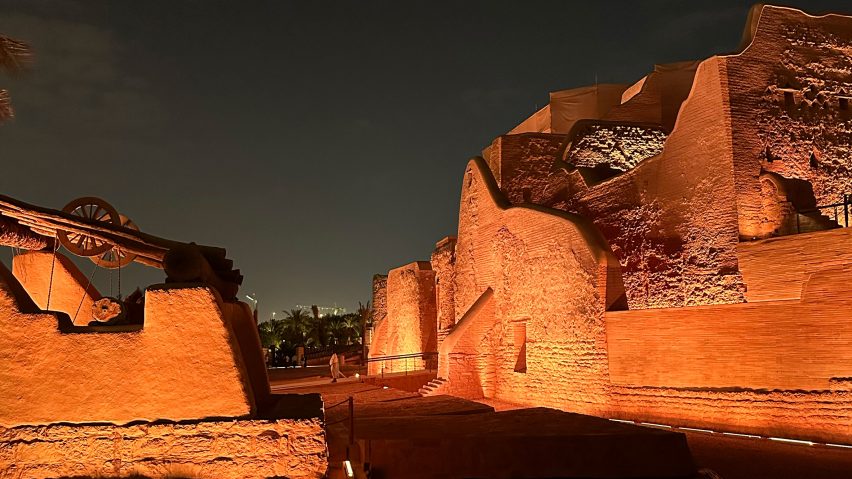
Diriyah
The seven-square-kilometre Diriyah development in the west of Riyadh is centred on the At-Turaif UNESCO World Heritage Site – a mud-brick city that was the original home of the Al Saud family and is known as the "birthplace of the kingdom".
Led by hotel veteran Jerry Inzerillo, the $63.2 billion development project funded by the Public Investment Fund aims to turn the site into a culture-led tourism destination. When complete, the district will contain 38 hotels, six museums and 26 other cultural attractions.
The first phase of the redevelopment – the Bujairi Terrace premium dining district, which contains 21 restaurants overlooking the mud city – opened at the end of last year.

King Salman Park
Currently under construction in central Riyadh, the King Salman Park project aims to be "the largest urban park in the world".
Masterplanned by Danish studio Henning Larsen and Saudi studio Omrania, the 16.7-square-kilometre park will feature 11 square kilometres of green space and one million trees. According to the developer, it will be watered with 100-per-cent-recycled city water.
At the centre of the park will be a collection of landmark buildings including the Royal Arts Complex, which will contain a 110-metre-high pyramid designed by Ricardo Bofill and a visitor pavilion by Adjaye Associates.
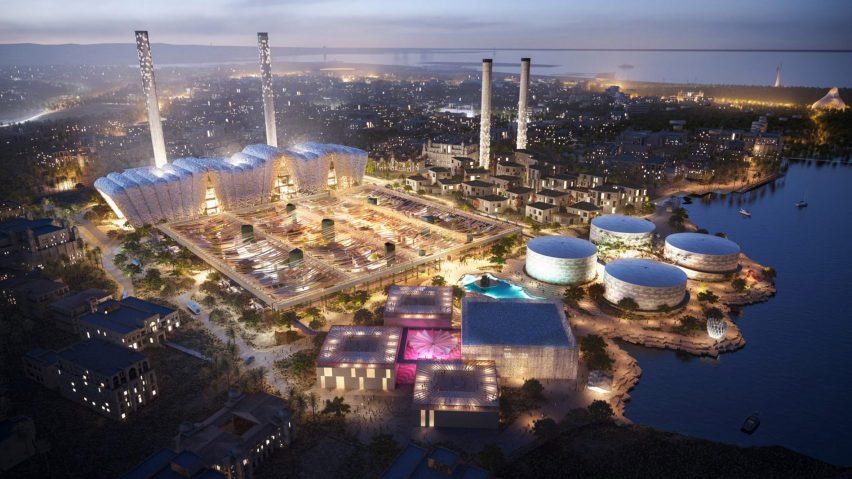
Jeddah Central
Covering 5.7 million square metres, this predominately residential development funded by the Public Investment Fund will contain 17,000 residential units and 2,700 hotel rooms anchored by four landmark buildings.
These landmarks include an arts centre designed by Heatherwick Studio (pictured) within a former desalination plant by the Red Sea. The other landmarks will be a stadium designed by German studio GMP Architecten, an opera house designed by Danish studio Henning Larsen and an oceanarium by US studio SOM.
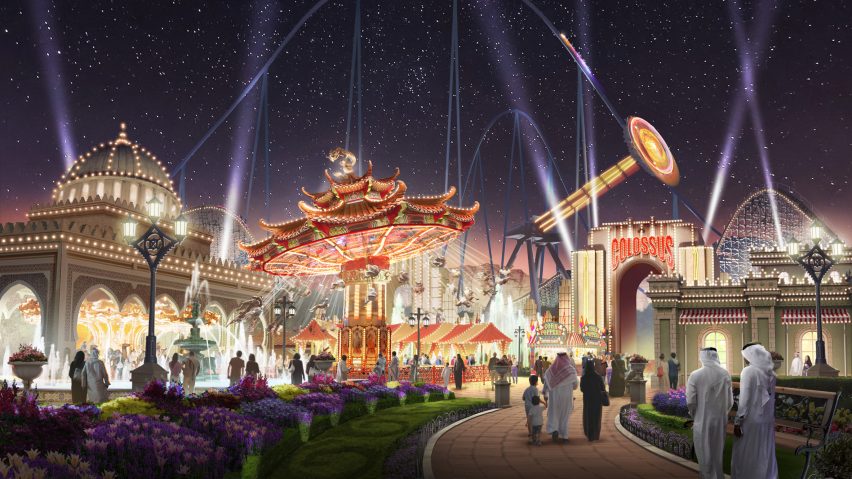
Qiddiya Project
Another project aimed at increasing the country's tourism offering, Qiddiya is described as "Saudi Arabia's emerging capital for entertainment, sports and culture".
Currently under construction to the west of Riyadh, the 367-square-kilometre project will contain numerous entertainment facilities, including sports arenas, concert halls, a racetrack, a Jack Nicklaus-branded golf course and Six Flags (pictured), which will contain the world’s longest, tallest and fastest rollercoaster.
The project is 100 per cent owned by the Public Investment Fund.
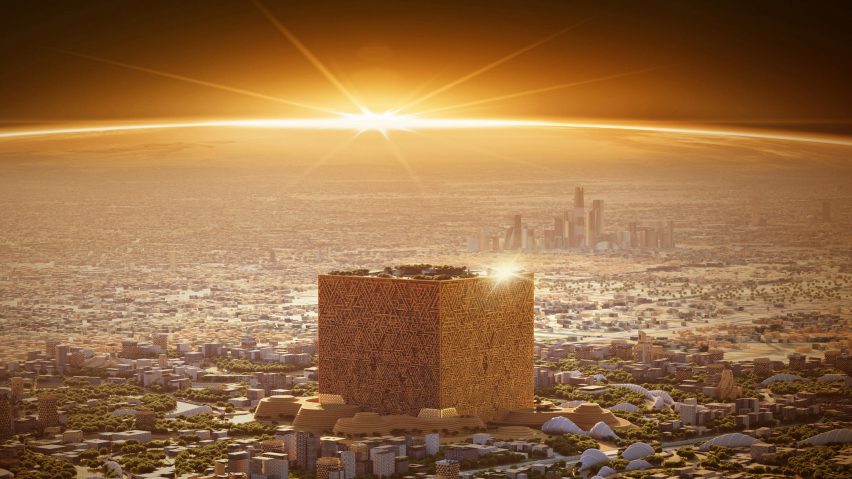
Murabba
Designed to "define Riyadh's new skyline", the Murabba will be a commercial and entertainment district built around a 400-metre-high cube-shaped skyscraper named Mukaab.
The cube, which will contain two million square metres of shops, and cultural and tourist attractions, will form the centre of a 19-square-kilometre development that is designed as a new downtown area for the Saudi capital city.
Led by Saudi crown prince Mohamed Bin Salman, the wider project will contain 100,000 residential units, 9,000 hotel rooms, 980,000 square metres of shops and 1.4 million square metres of office space.
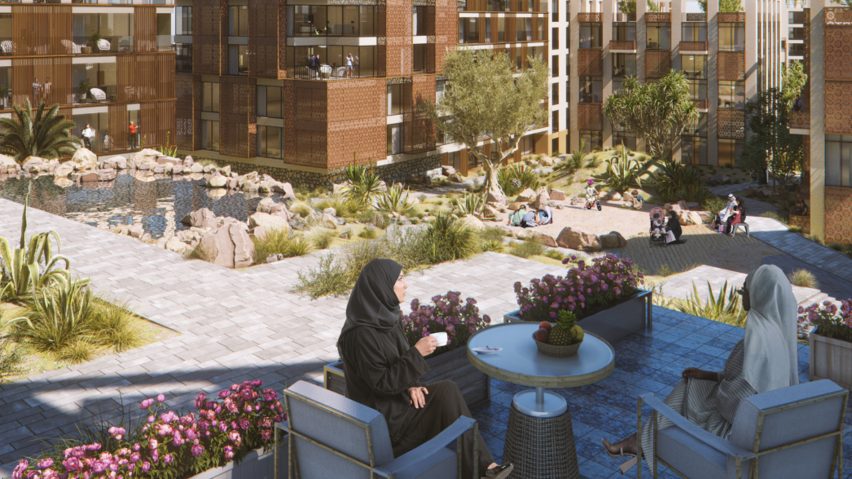
Saudi Downtown
Owned by the Public Investment Fund, the Saudi Downtown Company was set up to create "modern, mixed-used downtowns and destinations with diverse local cultures" in 12 Saudi Arabian cities – Arar, Dumat Al Jandal, Tabuk, Hail, Buraydah, Al Madinah, Al Khonbar, Al Ahsa, Taif, Al Baha, Jizan and Najran.
In total, the project's sites stretch over 10 million square metres.
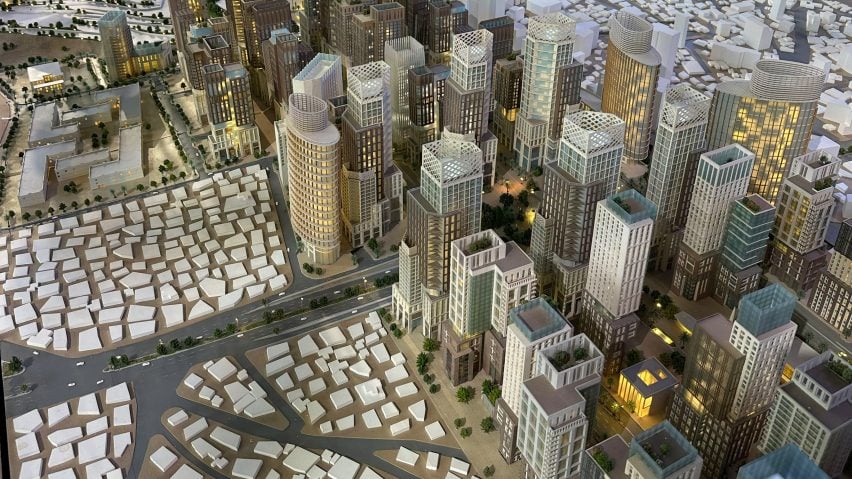
Masar
Led by private developer Umm Al Qura for Development & Construction, the Masar project is the redevelopment of a 3.6-kilometre-long and 300-metre-wide stretch of land alongside the Grand Mosque in Makkah (widely known as Mecca).
Arranged around a central 60-metre-wide pedestrianised street leading to a mosque, the development will contain 205 towers. Work has begun on the towers closest to the mosque and the developer expects Masar to be complete by 2035.
Architecture studios working on the scheme include Saudi studio Omrania, US studio HOK and UK practice RMJM.
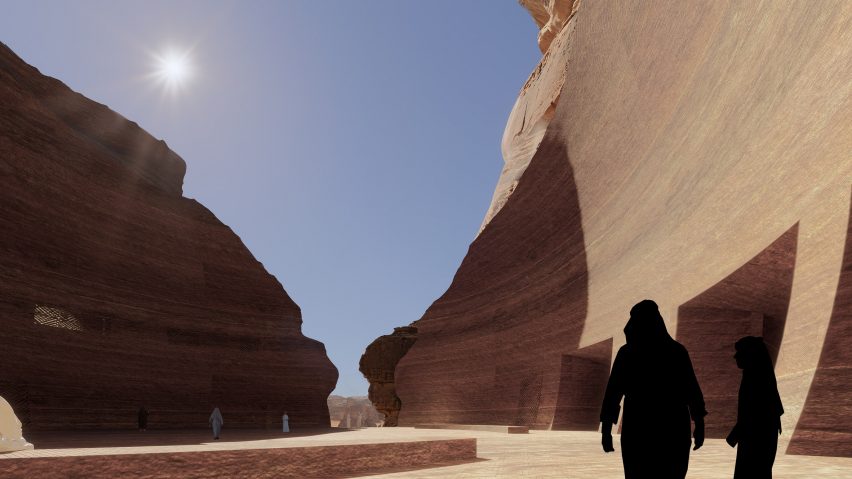
Al'Ula
Another project aimed at increasing the number of tourists that visit the country to 100 million a year, the development of Al'Ula in the northwest of the country is described as "the cornerstone of the Kingdom’s cultural and touristic ambitions".
The project will see the area around the Al'Ula UNESCO World Heritage Site developed with the construction of a series of museums and hotel. These will include a subterranean hotel carved into a sandstone hill designed by French architect Jean Nouvel (pictured) and a luxury tent resort by French architecture studio AW2.
Museums announced as part of the project include the Contemporary Art Museum, which will be designed by Lebanese architect Lina Ghotmeh and the Museum of the Incense Road, which will be designed by British architect Asif Khan.
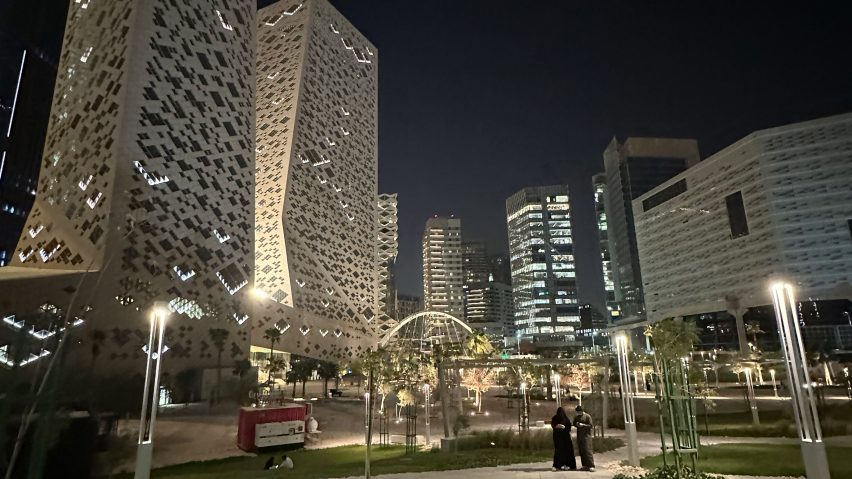
King Abdullah Financial District (KAFD)
Perhaps not technically a giga project, as it began before the announcement of the Vision 2030 plan, the King Abdullah Financial District is a giant office and residential district in Riyadh that is largely complete.
Masterplanned by Danish studio Henning Larsen, the 1,600,000-square-metre development will contain 61 towers and skyscrapers by studios including Saudi practice Omrania, US studios SOM, Gensler and HOK and UK studios CallisonRTKL and Foster + Partners.
All of the buildings in the development will be connected by a series of air-conditioned bridges, while a six-station monorail system runs around the edge of the site.
The downtown district will be connected to the under-construction Riyadh Metro by the large, Zaha Hadid Architects-designed King Abdullah Financial District (KAFD) Metro Station.
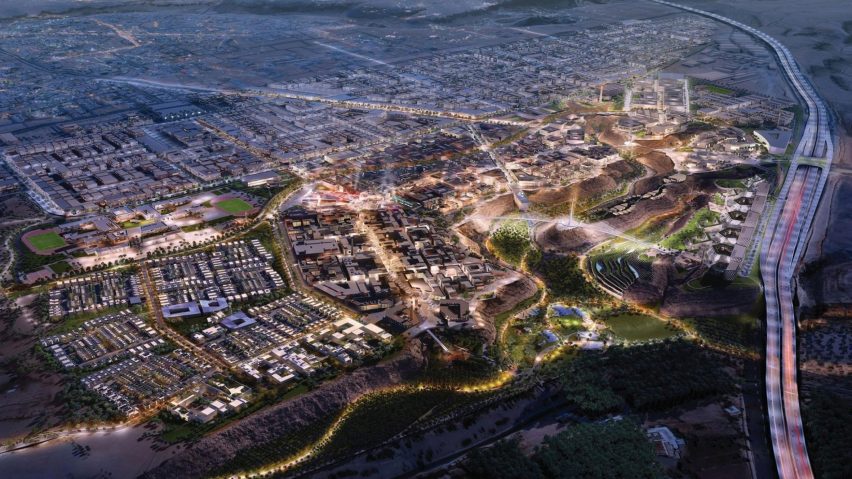
Mohammed bin Salman Non-profit City (MISK)
Named after Mohammed bin Salman and funded by his personal foundation, the Mohammed bin Salman Non-profit City, which is also known by the acronym MISK, is being built in Riyadh as a business incubator and a place to support the country's future leaders.
Designed as a 15-minute city with automated buses, the project will be arranged around a central spine covered by a giant shaded system designed by London-based studio CallisonRTKL.
It will also contain a transparent art institute designed by Bahrain-based practice Studio Anne Holtrop, a triangular headquarters for the MISK foundation designed by Australian architecture studio Conrad Gargett and the globe-shaped Center for Science, Technology, Reading, Engineering, Arts, and Mathematics.
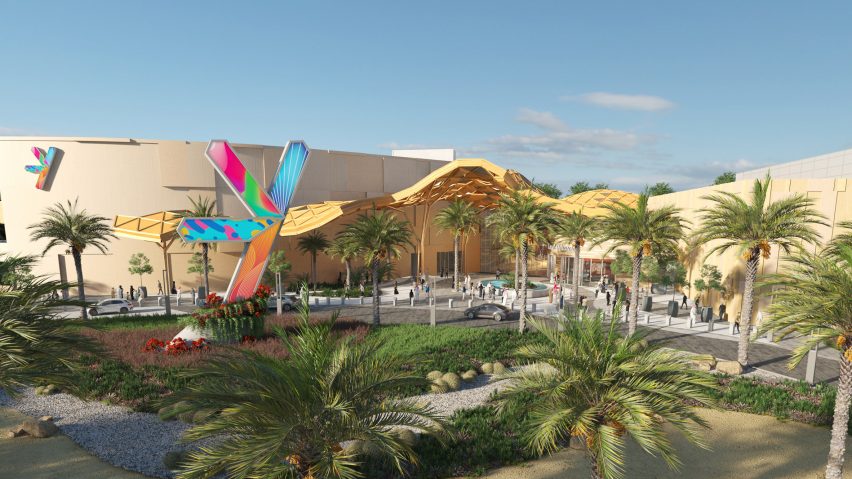
Seven
Entirely owned by the Public Investment Fund, Seven has the tagline "making tomorrow more entertaining". The organisation will develop and operate 10 entertainment districts across the country, with projects in Riyadh (pictured), Almadinah, Tabuk and Yanbu already announced.
Aimed at providing entertainment to the youthful population, the developments will each include indoor arenas, arcades, bowling, indoor golf, climbing, indoor surfing and skydiving centres and cinemas.